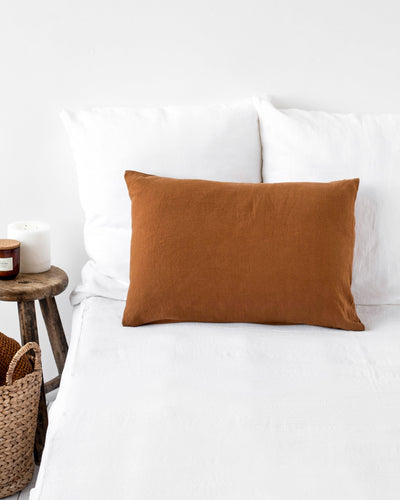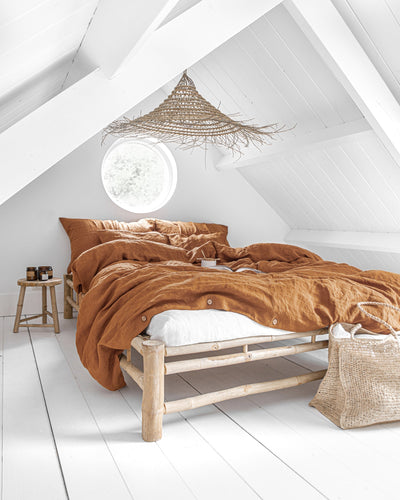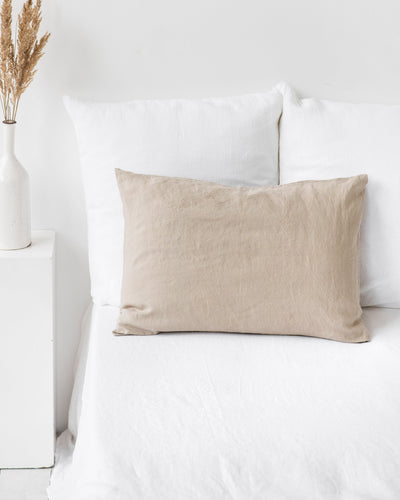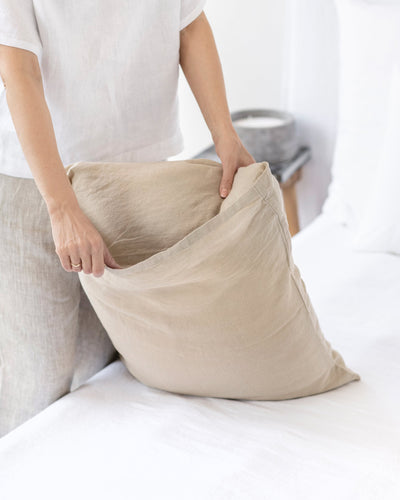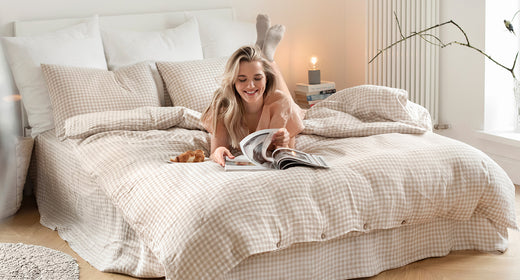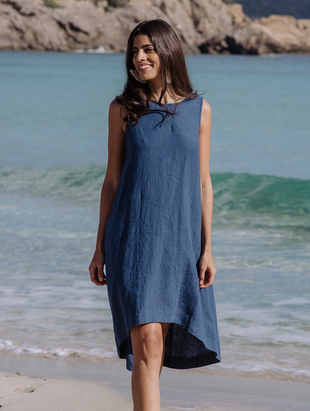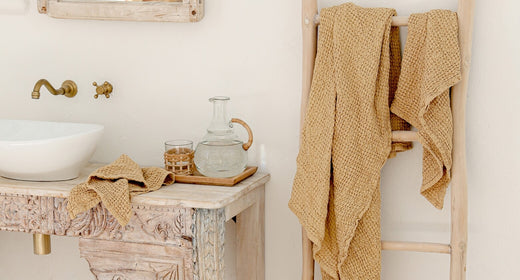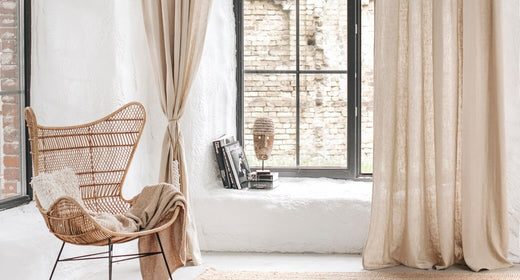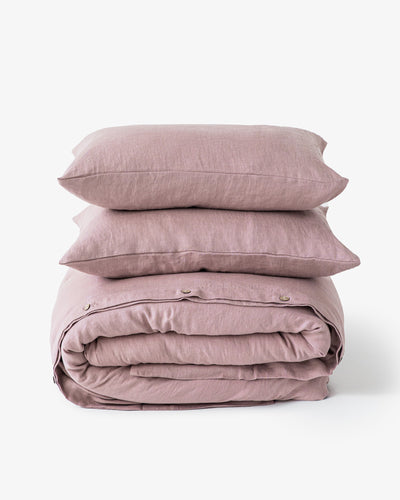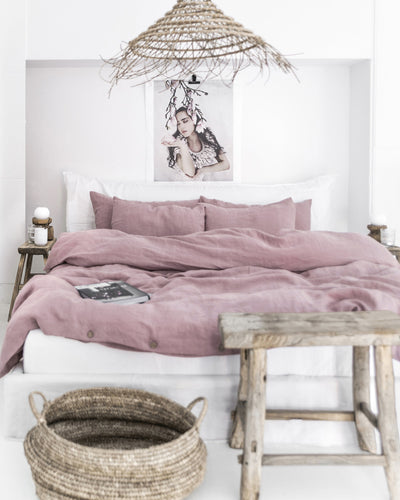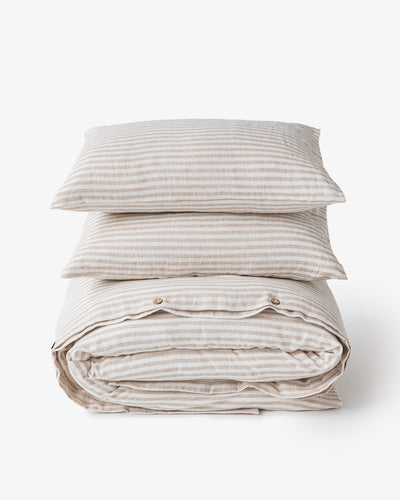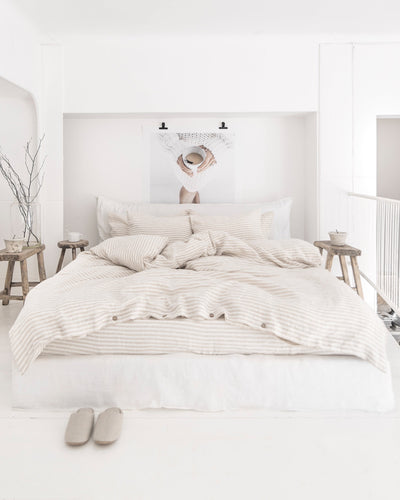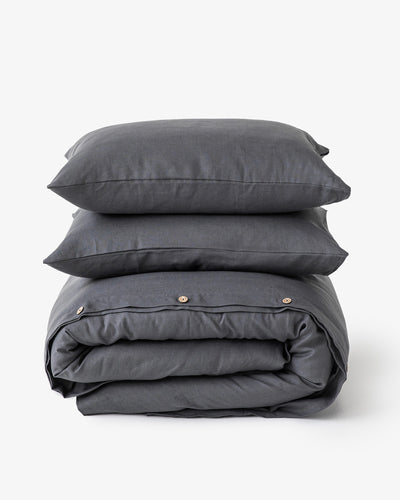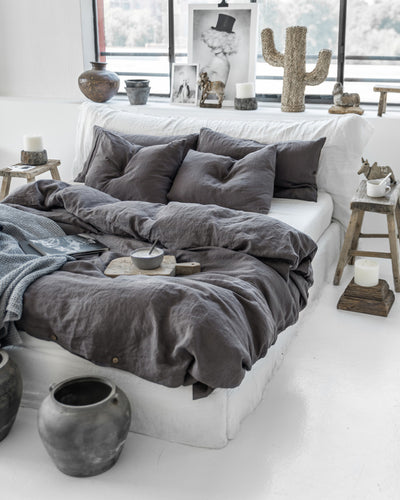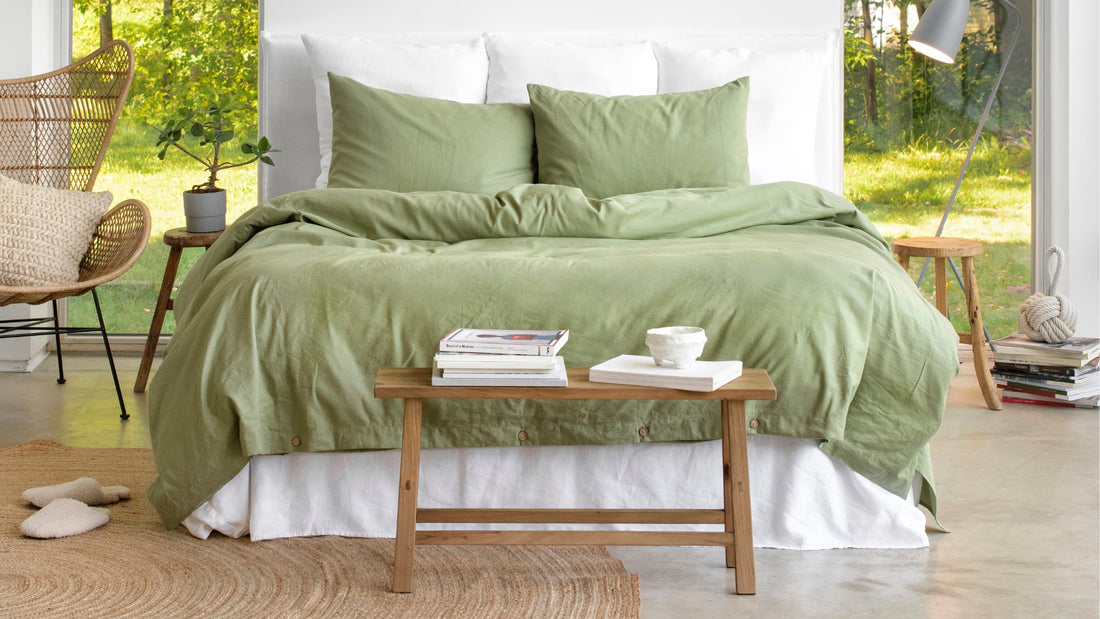
Bedding buying guide: what to consider before you bring your bed linen home?
Your bedroom is more than just a room; it's your sanctuary, the place where you rest, recharge, and escape from the world. The quality of your sleep hinges on the bedding you select, and within your bedding ensemble, sheets play a pivotal role.
Choosing the right sheets can elevate your sleep experience to a whole new level. This comprehensive sheet buying guide is here to guide you through the various options and critical factors to consider, helping you transform your bedroom into a haven of comfort.
The Fabric Dilemma

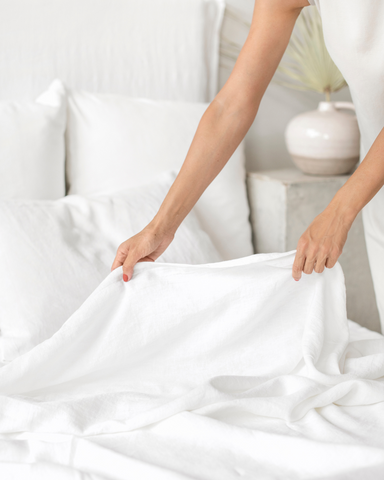
The journey of choosing the perfect sheets commences with a critical decision: selecting the right fabric. The fabric not only influences the feel of your sheets but also significantly affects their durability. Here are some common options:
1. Cotton sheets
-
Percale: Crisp and lightweight, percale sheets are highly breathable, offering a cool touch. Ideal for those who tend to sleep hot.
-
Sateen: These sheets are smooth and lustrous, providing a luxurious feel with a subtle sheen. Perfect for those who prefer a silky touch.
-
Flannel: Brushed for extra warmth, flannel sheets are the go-to choice for those chilly winter nights.
2. Linen sheets
Linen sheets are revered for their breathability and moisture-wicking properties, ensuring a cool and comfortable sleep. The slightly wrinkled, relaxed appearance adds to their charm.
3. Microfiber sheets
Microfiber sheets are incredibly soft, affordable, and easy to care for. They come in an extensive range of colors and patterns.
4. Silk sheets
Offering a truly luxurious sleeping experience, silk sheets are naturally hypoallergenic and temperature-regulating. They are an excellent choice for those with sensitive skin or allergies.
The Thread Count Myth
One prevalent misconception when buying sheets is the notion that a higher thread count translates to superior quality. While thread count does play a role, it's not the sole indicator of quality.
Thread count refers to the number of threads woven into a square inch of fabric. However, a very high thread count (usually over 800) doesn't necessarily guarantee better quality. What's more important is the quality of the fiber and the weaving technique. Look for sheets crafted from long-staple cotton, known for its durability and comfort.
The Weave's Web


1. Percale weave
Percale sheets follow a straightforward one-over-one-under weave pattern, resulting in a crisp, lightweight fabric that's perfect for those who tend to sleep hot.
2. Sateen weave
Sateen sheets use a three-over-one-under weave pattern, creating a smooth and lustrous surface. They are soft and boast a subtle sheen.
3. Twill weave
Twill sheets have a diagonal weave pattern, which provides added durability and a unique texture.
4. Jersey knit
Crafted from stretchy knit fabric, jersey sheets offer a soft, t-shirt-like feel. They are ideal for a cozy, casual ambiance.
Sizing and the Perfect Fit
Choosing sheets that match your mattress size is crucial. Standard sheet sizes often include Twin, Twin XL, Full, Queen, King, and California King. Pay close attention to the pocket depth as well. If you have a thicker mattress or use a mattress topper, deep-pocket sheets will ensure a snug and secure fit.
Navigating the World of Colors and Patterns

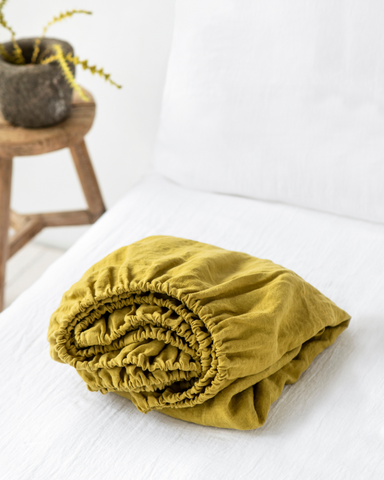
When it comes to the world of sheet selection, the journey of finding the perfect colors and patterns is akin to crafting a unique piece of art that reflects your individuality and taste. Let's embark on this creative journey and explore how to choose the ideal hues and designs:
1. Room harmony assessment
Begin your voyage by immersing yourself in a room assessment. Your bedroom, like a canvas, already boasts colors and design elements. Carefully observe these existing attributes, as they will serve as the canvas on which you'll paint your sheet selection.
2. Setting the mood
Imagine the ambiance you wish to foster within your bedroom. Are you looking for a serene and tranquil escape, or does your spirit yearn for an energetic and vibrant atmosphere? The colors and patterns you select will become the brushstrokes of your emotional landscape.
3. Seasonal adaptation
For those who enjoy celebrating the changing seasons with fresh bedding, consider embracing the versatility of neutral colors. Neutrals serve as the backdrop against which you can layer the hues of each season, creating a dynamic and ever-evolving visual experience.
4. Trust your inner artist
Your bedroom is a personal gallery, an expression of your unique personality. Trust your artistic intuition and gravitate toward colors and patterns that genuinely resonate with you. The choices you make will craft a space where you find comfort and inspiration.
Embarking on this creative journey ensures that the colors and patterns you select for your sheets will become an integral part of your personal masterpiece. A space that not only offers the comfort of sleep but also the warmth of self-expression.
Care and Maintenance
Taking proper care of your sheets is essential for their longevity and your comfort. Here are some tips:
- Launder your sheets: Follow the care instructions on the label, but in general, use a mild detergent and cold water. Avoid using bleach.
- Dry with care: Opt for low heat when tumble drying to prevent shrinkage. Remove them from the dryer promptly to reduce wrinkles.
- Iron if desired: If you prefer a crisp look, iron your sheets while they are slightly damp.
Personal Preferences Matter
Your personal preferences play a significant role in choosing the right sheets. Consider factors such as the season – do you need lightweight and breathable sheets for summer or warmer options for winter? Take into account any allergies or skin sensitivities that may guide your fabric choice. Lastly, think about your desired aesthetic and the color or pattern that complements your bedroom decor.
In Conclusion
Sheets are the unsung heroes of your sleep sanctuary. By selecting the right fabric, weave, and size and caring for your sheets diligently, you can curate a haven of comfort in your bedroom. Remember that thread count is just one piece of the puzzle, and personal preferences should guide your choices. A restful night's sleep begins with your bedding, so make the right selection and transform your sleep space into a dreamy retreat. Sweet dreams!
Frequently Asked Questions
Is 1500 a good thread count for sheets?
A thread count of 1500 is exceptionally high and may not necessarily translate to better quality. While thread count is a factor to consider, it's equally important to assess the quality of the fiber and the weaving technique. More than thread count, look for long-staple cotton and a weave pattern that suits your preferences.
What thread count is best when buying sheets?
The ideal thread count for sheets depends on personal preferences. In general, a thread count between 300 and 800 is considered suitable for most people. However, other factors, such as fabric quality and weave type, are equally important in determining sheet quality.
What should you avoid when buying sheets?
When buying sheets, it's best to avoid focusing solely on thread count as an indicator of quality. Higher thread count does not always equate to better sheets. Additionally, be cautious of purchasing sheets made from low-quality materials or from manufacturers with poor reputations.
How do you determine the best sheets?
The best sheets are determined by a combination of factors, including personal preferences, the type of fabric, weave pattern, and thread count. It's essential to consider your sleeping habits, such as whether you tend to sleep hot or cold, and any skin sensitivities or allergies. Ultimately, the best sheets are the ones that provide comfort and meet your specific needs.
 United States
United States


